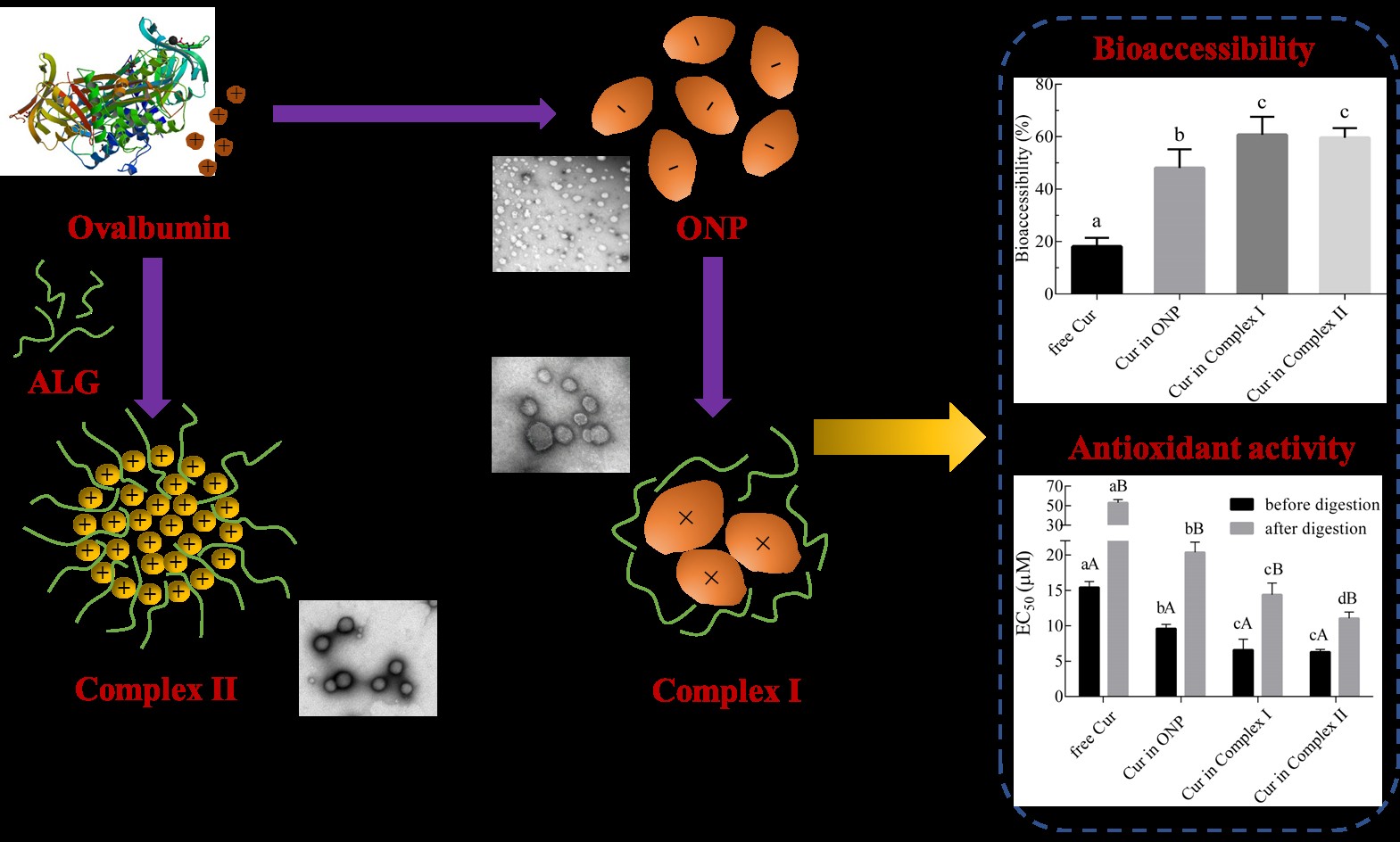Type I (Complex I) and type II nanocomplexes (Complex II) were created in this work for curcumin (Cur) delivery using ovalbumin (OVA, 1.0% w/w) and sodium alginate (ALG, 0.5% w/w) as building blocks. OVA was heated at 90 °C for 5 min at pH 7.0 and then coated with ALG at pH 4.2 to produce Complex I; OVA–ALG electrostatic complex was created at pH 4.0, which was treated at 90 °C for 5 min thereafter yielding Complex II. Complex I presented an irregular elliptical shape with a diameter of ~ 250 nm, whereas Complex II adopted a defined spherical structure of a smaller size (~ 200 nm). Complex II did not dissociate at the pH range of 5–7, which was different from Complex I. Cur was loaded into the non–polar matrix of nanocomplexes through hydrogen bonding and hydrophobic interactions, and Complex II displayed a higher loading capacity than Complex I. Nanocomplexes were resistant to pepsinolysis during simulated gastrointestinal digestion, which enhanced the stability and controlled release of loaded Cur, thereby improving Cur bioaccessibility from ~ 20% (free form) to ~ 60%. Additionally, nanocomplexes contributed to the cellular antioxidant activity (CAA) of Cur by promoting its cellular uptake. The CAA of Cur was also better preserved in nanocomplexes especially in Complex II after digestion owing to the increased stability and bioaccessibility. Results from this work highlighted the effect of nanocomplex encapsulation on the performance of Cur and revealed the critical role of preparation method in the physicochemical attributes of nanocomplexes.



